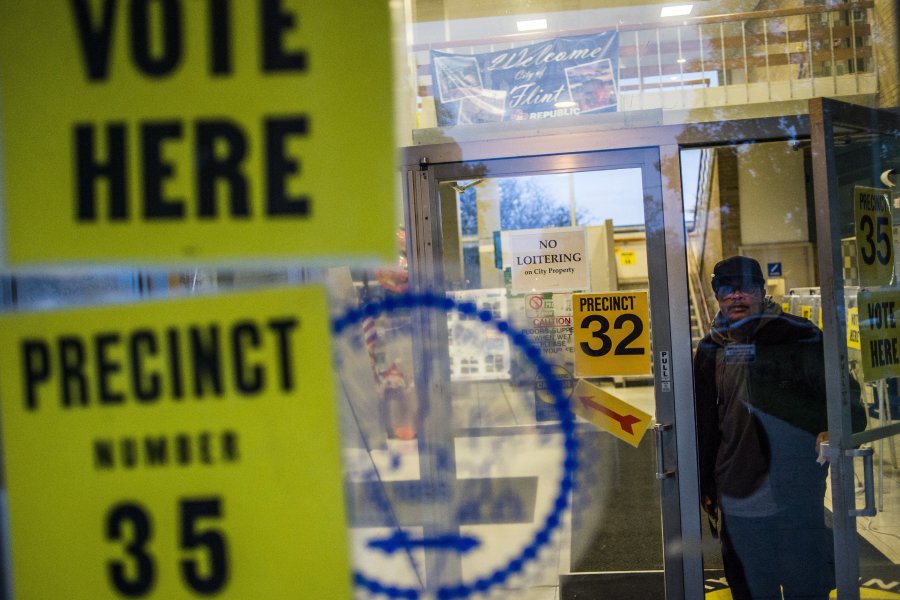The 2016 presidential contest was awash with charges that the fix was in: Republican Donald Trump repeatedly claimed that the election was rigged against him, while Democrats have accused the Russians of stacking the odds in Trumps’ favor.
Less attention was paid to manipulation that occurred not during the presidential race, but before it — in the drawing of lines for hundreds of U.S. and state legislative seats. The result, according to an Associated Press analysis: Republicans had a real advantage.
The AP scrutinized the outcomes of all 435 U.S. House races and about 4,700 state House and Assembly seats up for election last year using a new statistical method of calculating partisan advantage designed to detect potential political gerrymandering.
The analysis found four times as many states with Republican-skewed state House or Assembly districts than Democratic ones. Among the two dozen most populated states that determine the vast majority of Congress, there were nearly three times as many with Republican-tilted U.S. House districts.
Traditional battlegrounds such as Michigan, North Carolina, Pennsylvania, Wisconsin, Florida and Virginia were among those with significant Republican advantages in their U.S. or state House races. All had districts drawn by Republicans after the last Census in 2010.
The AP analysis also found that Republicans won as many as 22 additional U.S. House seats over what would have been expected based on the average vote share in congressional districts across the country. That helped provide the GOP with a comfortable majority that stood at 241-194 over Democrats after the 2016 elections — a 10 percentage point margin in seats, even though Republican candidates received just 1 percentage point more total votes nationwide.
“The outcome was already cooked in, if you will, because of the way the districts were drawn,” said John McGlennon, a longtime professor of government and public policy at the College of William & Mary in Virginia who ran unsuccessfully for Congress as a Democrat in the 1980s.
A separate statistical analysis conducted for AP by the Princeton University Gerrymandering Project found the extreme Republican advantages in some states were no fluke. The Republican edge in Michigan’s state House districts had only a 1-in-16,000 probability of occurring by chance; in Wisconsin’s Assembly districts, there was a mere 1-in-60,000 likelihood of it happening randomly, the analysis found.
The AP’s analysis was based on an “efficiency gap” formula developed by University of Chicago law professor Nick Stephanopoulos and Eric McGhee, a researcher at the nonpartisan Public Policy Institute of California. Their mathematical model was cited last fall as “corroborative evidence” by a federal appeals court panel that struck down Wisconsin’s Assembly districts as an intentional partisan gerrymander in violation of Democratic voters’ rights to representation. The U.S. Supreme Court has agreed to hear an appeal.
Stephanopoulos and McGhee computed efficiency gaps for four decades of congressional and state House races starting in 1972, concluding the pro-Republican maps enacted after the 2010 Census resulted in “the most extreme gerrymanders in modern history.”
The efficiency gap formula compares the statewide average share of the vote a party receives in each district with the statewide percentage of seats it wins, taking into account a common political expectation: For each 1 percentage point gain in its statewide vote share, a party normally increases its seat share by 2 percentage points.
The AP used their method to calculate efficiency gaps for all states that held partisan House or Assembly elections for all of their districts in 2016.
Michigan provides a good example of how the formula works.
Last fall, voters statewide split their ballots essentially 50-50 between Republican and Democratic state House candidates. Yet Republicans won 57 percent of the House seats, claiming 63 seats to the Democrats’ 47. That amounted to an efficiency gap of 10.3 percent favoring Republicans, one of the highest advantages among all states.
Republicans controlled both Michigan legislative chambers and the governor’s office when the maps were redrawn in 2011. The Michigan House redistricting effort was led by then-state Rep. Pete Lund, who denied gerrymandering districts to favor Republicans. He blamed Democrats for their own losses.



